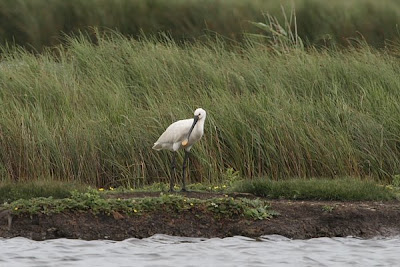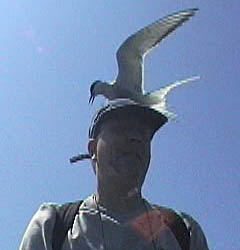The wetlands have a lot of reed warblers in the reeds, and sedge warblers in the .... well in the reeds. I got a few more shots of both, but have taken probably 10 shots for every one that is sharp enough. The others are just slightly out, but don't look right. Anyway here are a few of the slightly better ones.


 The whitethroat are also pretty evident and this juvenile posed quite well, if not quite near enough.
The whitethroat are also pretty evident and this juvenile posed quite well, if not quite near enough.
 How do I know it's a juvenile? Here's how.
How do I know it's a juvenile? Here's how. 
Sadly this shot is also unsharp, although just about acceptable at this size! The bramble branch above is sharp. Bugger.
A juvenile blue tit was still trying to learn some balance control, and that you can't eat through your tail - again not really sharp, but this was a tricky focus.

Despite the wind I fared better with my new macro lens however. Cinnabar moth caterpillars, bonking beetle (Rhagonycha fulva) and six spot burnet moth. I found a six spot caterpillar last year, but this was the first time I'd seen the adults at the wetlands.






 Despite my recent comments the beardies were conspicuous by their absence on this occasion.
Despite my recent comments the beardies were conspicuous by their absence on this occasion.As always some of the pictures can be seen in better quality
in the photo gallery - follow the top link to the right


























 and fly off.
and fly off.



 some black tailed godwits (ditto),
some black tailed godwits (ditto),  and a small flock of beardies, of which two youngsters came in camera range - albeit briefly. Some birds just don't know how to pose properly.
and a small flock of beardies, of which two youngsters came in camera range - albeit briefly. Some birds just don't know how to pose properly.























